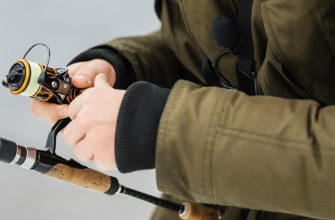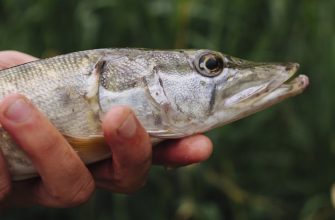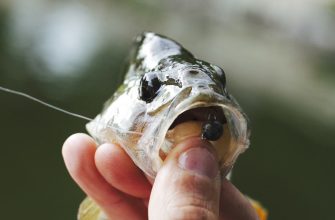- Popular Ice Fishing Species
- Walleye
- Crappie
- Bluegills
- Yellow Perch
- Northern Pike
- Trout
- Best Time to Ice Fish
- Early Winter: December to January
- Mid-Winter: February to March
- Late Winter: April
- Location Matters
- Top Ice Fishing Locations in the US
- Lake of the Woods, Minnesota
- Lake Champlain, Vermont/New York
- Devils Lake, North Dakota
- Lake Winnipesaukee, New Hampshire
- Mille Lacs Lake, Minnesota
- Popular International Ice Fishing Locations
- Canada: Ontario
- Sweden: Jämtland
- Russia: Lake Baikal
- Finland: Lapland
- United States: Lake Champlain
- Choosing a Good Ice Fishing Spot
- Importance of Finding the Right Fishing Spot
- Factors to Consider When Selecting an Ice Fishing Location
- Ice Thickness and Safety
- Structure and Depth
- Water Currents and Movement
- Underwater Vegetation
- Tips for Locating the Best Fishing Locations
- Research and Local Knowledge
- Observe Other Anglers
- Follow Fish
- Experiment and Adapt
- Essential Ice Fishing Gear
- Importance of Having the Right Fishing Gear
- Ice Augers
- Fish Finder for Ice Fishing
- Rod and Reel Combos
- Ice Fishing Lures and Tools
- Ice Sleds
- Ice Shelters
- Safety Picks and Throw Rope
- Best Ice Fishing Baits and Lures
- Importance of Choosing the Correct Bait for Different Fish
- Overview of Popular Bait Options for Ice Fishing
- Jigging Spoons
- Vertical Jigging Minnows
- Darters and Lipless Crankbaits
- Jigs Rigged with Plastics or Live Bait
- Tips for Bait Presentation and Attracting Fish
- Ice Fishing for Beginners: Techniques and Tips
- Jigging Techniques
- Explanation of the jigging technique
- Step-by-step guide on how to jig properly:
- Tips for using different types of jigs effectively:
- Using Tip-Up
- How to set up and use a tip-up:
- Advantages and tips for using tip-ups effectively:
- How to Start Ice Fishing
- 1. Purchase a Fishing License
- 2. Check the Fishing Regulations
- 3. Use the Right Fishing Equipment
- 4. Decide When and Where to Ice Fish
- 5. Choose the Right Type of Bait
- 6. Find a Good Ice Fishing Location
- 7. Test the Ice and Drill a Hole Using an Ice Auger
- 8. Rig Your Lines and Drop the Baits
- 9. Position the Fishing Line Within Striking Distance
- 10. Wait for a Nibble
- Safety Measures for Ice Fishing
- Importance of Ice Fishing Safety
- Essential Safety Precautions to Take While Ice Hooking
- Tips for Staying Safe on Frozen Lakes and Rivers
- Ice Fishing Apparel
- Dressing for the Cold
- Keeping Your Extremities Warm
- Eye Protection
- Safety First
- Conclusion
- FAQs
- Q: What are some ice fishing basics I need to know before getting started?
- Q: What kind of fish can I catch while ice fishing?
- Q: What is the best time for ice fishing?
- Q: What gear essentials do I need for ice fishing?
- Q: How do I stay safe while ice fishing?
- Q: What are some effective techniques for ice fishing?
- Q: How can I improve my ice fishing skills as a beginner?
- Q: Can I go ice fishing without a boat?
- Q: What should I keep in mind when fishing on the ice?
- Q: Where are some popular ice fishing destinations?
Are you ready to embark on your next ice fishing trip? If you’re new to the world of ice angling, don’t worry! We’ve got you covered with the best tips and techniques to get you started. In this article, we’ll explore some expert advice from America’s top ice-hooking enthusiasts, so let’s dive in!
When it comes to ice hooking, the devil’s in the details. Saltwater fishing may be a different ballgame, but ice hooking presents its own set of unique challenges. One of the first things you’ll need to consider is finding clear ice. This is crucial for your safety, as it ensures the ice is thick enough to support your weight.

To kick off your ice-hooking adventure, let’s focus on one of the most sought-after fish varieties: walleye. Known for its delicious flavor and challenging nature, walleye fishing is a thrill like no other. We’ll provide you with the information you need to hook in these prized fish. From the best lures to use to the perfect technique, you’ll be well-equipped to start hooking fish in no time.
But wait, there’s more! Ice hooking isn’t just about walleye. Trout is another popular species of choice for ice fishing enthusiasts. We’ll share some tips and tricks for hooking trout and walleye, so you can maximize your chances of success.
Regarding location, the shoreline is often a great starting point. Shallow bays and areas near drop-offs tend to attract fish. Keep an eye out for structures like submerged trees or rocks, as they provide hiding spots for fish. If you’re fishing in the Mississippi area, you might even stumble upon some surprises!
Now, let’s talk about gear. A good spinning reel is essential for ice hooking. Be sure to choose one that is suitable for the species of fish you will be hooking. Additionally, water safety should always be a top priority. Remember to check the ice thickness before venturing out and never go alone. It’s always safer to camp with a buddy.
So, whether you’re in Alabama or any other ice hooking hotspot, let’s get started with the best ice hooking tips and techniques for beginners. With the right knowledge and a little bit of luck, you’ll be well on your way to a successful ice-hooking adventure!
Remember, safety first and enjoy the thrill of hauling in the fish!
Popular Ice Fishing Species
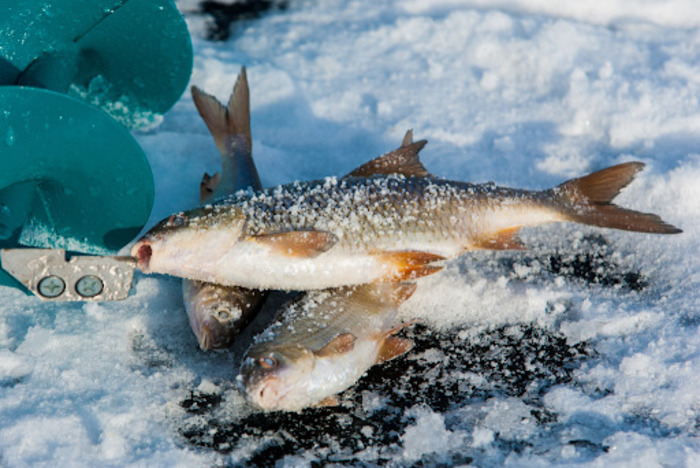
Walleye
Walleye, also known as the “ice king,” is a prized catch for ice fishermen. These fish are known for their excellent taste and challenging behavior. Walleye are typically found in deeper waters, so it’s important to drill multiple holes and move around until you locate their feeding grounds. Using live attractants, such as minnows or small jigs, is highly effective for enticing walleye to bite.
Crappie
Crappies are another popular fish variety sought after by ice fishermen. These panfish are known for their delicious white meat and can be found in both shallow and deep waters. When crappie fishing, look for them near underwater structures such as brush piles, fallen trees, or weed beds. Small jigs tipped with minnows or soft plastics work well for enticing crappie to strike.
Bluegills
Bluegills, also known as sunfish, are a favorite goal for many ice anglers, especially beginners. These fish are abundant in most lakes and are known for their willingness to bite. Bluegills can be found in shallower waters near submerged vegetation or structures. Using small jigs or ice flies tipped with waxworms or small pieces of nightcrawler is a popular method for hooking bluegills.
Yellow Perch
Yellow perch are highly sought after for their delicious taste and can provide exciting ice-hooking action. These fish are typically found in schools near the bottom of the lake. Using small jigs or spoons tipped with minnows or soft plastics is an effective way to entice yellow perch to bite. It’s important to experiment with different jigging techniques and depths to find the most productive presentation.
Northern Pike
They are aggressive predators and can provide thrilling ice-hooking experiences. These fish are known for their sharp teeth and powerful strikes. When hooking pike, focus on areas with weeds, submerged structures, or drop-offs. Large spoons or tip-ups with live attractants, such as suckers or shiners, are commonly used to catch these toothy predators.
Trout
Trout varieties offer a unique ice-hooking experience and are highly prized for their fighting abilities. Rainbow trout, brown trout, brook trout, and lake trout can be found in different types of water bodies, including lakes, rivers, and reservoirs. These fish often prefer colder water temperatures, so drilling holes near deeper areas or underwater structures can increase your chances of success. Various attractants, such as small jigs, spoons, or live bait, can be effective for catching trout varieties.
Best Time to Ice Fish

Early Winter: December to January
The early winter months of December and January are a great time to start ice hooking in many parts of the country. As the temperatures drop and lakes begin to frost over, fishermen can venture onto the ice in search of various fish species.
Mid-Winter: February to March
Mid-winter, specifically February and March, is often considered the prime time for ice hooking. By this time, the ice thickness is generally at its peak, providing a solid and safe surface for fishermen to set up their gear. Additionally, fish tend to be more active during this period, making it easier to hook a variety of species.
Late Winter: April
In some northern regions of the US, ice hooking can extend into April, albeit with more caution. As temperatures begin to rise, it’s essential to check the ice conditions regularly to ensure safety. Late winter ice hooking can offer unique opportunities to catch certain varieties, such as lake trout and northern pike, that are more active during this time.
Location Matters
While the general timeframes mentioned above provide a guideline for ice hooking in the US, it’s important to note that specific locations may have variations. Factors such as regional climate, local permits, and the freeze-thaw cycle can influence the conditions for ice hooking in different areas.
Top Ice Fishing Locations in the US
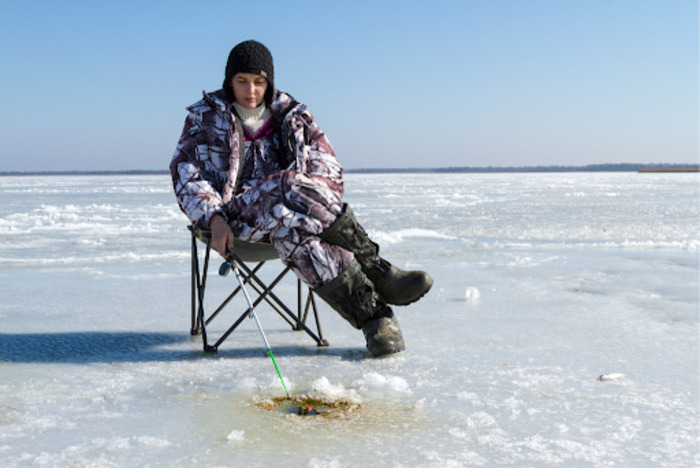
If you’re looking to experience the thrill of ice hooking, here are some top locations to consider:
Lake of the Woods, Minnesota
Located in northern Minnesota, Lake of the Woods is renowned for its excellent ice-hooking opportunities. This massive lake is known for its abundance of walleye, sauger and northern pike. Anglers flock to Lake of the Woods for its generous bag limits and the chance to hook in trophy-sized fish.
Lake Champlain, Vermont/New York
Straddling the border between Vermont and New York, Lake Champlain offers fantastic ice-hooking opportunities. This expansive lake is home to various fish species, including perch, crappie, and lake trout. Anglers can enjoy the stunning mountain views while waiting for their tip-ups to signal a bite.
Devils Lake, North Dakota
Devils Lake in North Dakota is a premier ice-hooking destination, especially for perch and walleye. This lake boasts a healthy fish population, making it an ideal location for fishermen of all skill levels. With its vast ice-covered surface, Devils Lake gives anglers plenty of room to explore the ice and find the perfect angling spot.
Lake Winnipesaukee, New Hampshire
Located in the heart of New Hampshire, Lake Winnipesaukee offers a unique ice-hooking experience. This picturesque lake is known for its abundance of lake trout, salmon, and whitefish. Ice fishermen can set up their ice huts and enjoy a day of fishing while surrounded by the stunning winter beauty of the New Hampshire landscape.
Mille Lacs Lake, Minnesota
Mille Lacs Lake, situated in central Minnesota, is a popular destination for ice-hooking enthusiasts. This large lake is home to various fish types, including walleye, northern pike, and smallmouth bass. Ice fishermen can take advantage of the well-maintained ice roads and find their perfect fishing locale on the ice-covered lake.
Popular International Ice Fishing Locations
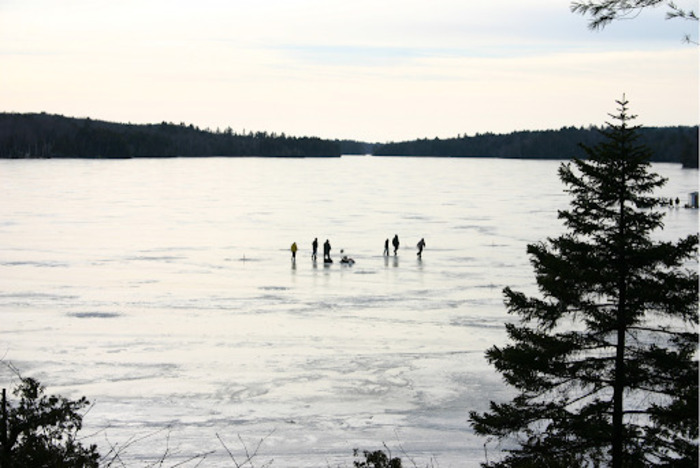
Some popular international destinations are renowned for their excellent ice-hooking opportunities:
Canada: Ontario
Ontario, Canada is a top destination for ice fishermen from around the world. Its vast network of lakes provides ample opportunities to catch a wide range of fish varieties. One of the most sought-after varieties in Ontario is the walleye, known for its delicious taste and thrilling fight. ice hooking enthusiasts flock to destinations like Lake Simcoe and Lake Nipissing to experience the excitement of hooking these prized fish.
Sweden: Jämtland
Jämtland, Sweden is a hidden gem for ice-hooking enthusiasts seeking a unique and picturesque experience. The region boasts numerous ice-covered lakes and rivers, offering the chance to catch varieties like perch, pike, and trout. Ice fishermen in Jämtland can enjoy the stunning natural beauty of the Swedish wilderness while trying their luck on the ice.
Russia: Lake Baikal
Lake Baikal in Russia is not only the deepest lake in the world but also a premier ice-hooking destination. This vast freshwater lake is home to various fish types, including the popular omul. Ice fishermen can drill a hole in the thick ice and drop their lines to catch these delicious fish. The stunning frozen landscape of Lake Baikal adds to the allure of ice hooking in this unique location.
Finland: Lapland
For a true winter wonderland experience, ice anglers often turn to Lapland, Finland. With its pristine ice-covered lakes surrounded by snow-covered forests, Lapland offers a serene and magical setting for ice hooking. Fishermen can catch fish varieties like Arctic char and whitefish while enjoying the tranquility of the Finnish wilderness.
United States: Lake Champlain
In the United States, Lake Champlain, located on the border of Vermont and New York, is a hotspot for ice hooking enthusiasts. This expansive lake is known for its abundant populations of fish, including northern pike, perch, and bluegills. Ice fishermen can set up their equipment in the comfort of ice huts and test their skills in catching these prized fish.
Choosing a Good Ice Fishing Spot
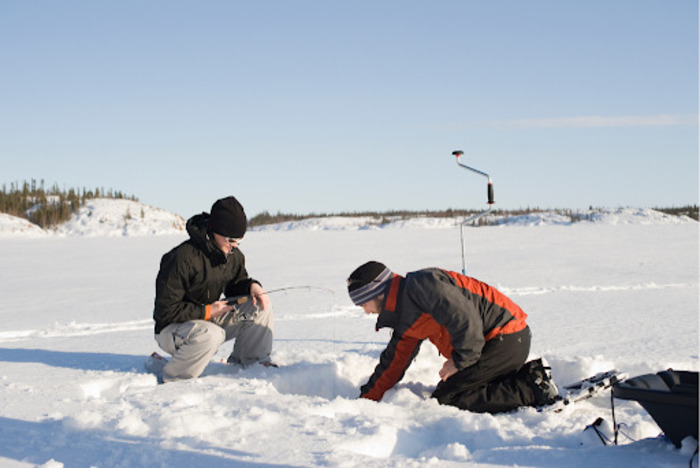
Importance of Finding the Right Fishing Spot
Finding the right ice-hooking locale is crucial for a successful and enjoyable experience. The right location can significantly increase your chances of catching fish and make your outing more productive. On the other hand, choosing the wrong location may result in a frustrating and unproductive day on the ice.
Factors to Consider When Selecting an Ice Fishing Location
When selecting an ice hooking locale, there are several factors to consider. Understanding these factors will help you make informed decisions and increase your chances of success.
Ice Thickness and Safety
Before venturing onto the ice, it is essential to ensure that it is thick enough to support your weight. Check local ice thickness reports and use your auger to drill a hole and measure the ice thickness. Remember, safety should always be your top priority when ice hooking.
Read more: Primitive Fishing Techniques for Catching Fish in a Survival Situation
Structure and Depth
Fish are often found near underwater structures such as reefs, drop-offs, and weed beds. These structures provide cover and attract smaller fish, which in turn attract larger predator fish. Use a fish finder or consult local fishing resources to identify these underwater structures and determine the depth at which fish are likely to be found.
Water Currents and Movement
Water currents can influence fish behavior and their feeding patterns. Look for areas where currents are present, such as inlets, outlets, or narrows. These areas can be hotspots for fish activity, as the moving water brings food and oxygen, attracting fish.
Underwater Vegetation
Vegetation, such as weeds and submerged plants, provides shelter and a source of food for fish. Areas with abundant underwater vegetation are often productive hooking locales. Look for signs of vegetation, such as dark locations or patches, and consider selecting these areas.
Tips for Locating the Best Fishing Locations
Locating the best hooking locales requires a combination of knowledge, experience, and observation. Here are some tips to help you in your search:
Research and Local Knowledge
Take advantage of online resources and local fishing guides to gather information about popular ice hooking locales in your area. They can provide valuable insights into the best lakes or specific areas within a lake that are known for good ice hooking.
Observe Other Anglers
When you arrive at the lake, take some time to observe other ice fishermen. Look for signs of activity, such as groups of fishermen gathered in a particular area or people moving frequently. This could indicate that they have found a productive hooking locale.
Follow Fish
Pay attention to fish movement patterns. If you spot schools of fish moving in a certain direction, it may indicate a feeding frenzy or a preferred route. Follow their path and set up your fishing location accordingly.
Experiment and Adapt
Don’t be afraid to try different hooking locales and techniques. Ice hooking can be unpredictable, and what worked one day may not work the next. Be willing to adapt and adjust your strategy based on the conditions and the fish’s behavior.
Remember, choosing a good ice-hooking locale is not an exact science. It requires a combination of knowledge, experience, and a bit of luck. By considering the factors mentioned above and following these tips, you can increase your chances of finding productive locations and making the most of your time on the ice.
Essential Ice Fishing Gear

Importance of Having the Right Fishing Gear
Having the right fishing gear is crucial for ice hooking. The harsh winter conditions and the unique environment of ice-covered lakes require specialized equipment. With the proper gear, you can drill through the ice, locate fish, and effectively catch them. Investing in quality ice hooking gear will enhance your overall experience and increase your chances of success.
Ice Augers
They are essential tools for ice hooking. These handheld or power-driven devices are used to drill holes in the ice. There are various types of augers available, including manual, gas-powered, and electric devices. Gas-powered and electric devices provide more convenience and speed when drilling through thick ice. Make sure to choose an auger suitable for the ice thickness you’ll be fishing on.
Fish Finder for Ice Fishing
A fish finder is a valuable tool for ice hooking, especially when catching specific fish varieties. This device uses sonar technology to locate fish beneath the ice. It displays information about the depth, structure, and movement of fish, helping you determine the right location to drill your holes. Fish finders for ice hooking are designed to withstand extreme cold temperatures and provide accurate readings even in icy conditions.
Rod and Reel Combos
Ice fishing requires specialized rod and reel combos designed for the cold weather and unique challenges of ice hooking. These combos are typically shorter and more sensitive to detect subtle bites through the ice. Ice-fishing-specific lines, such as fluorocarbon or braided lines, are recommended for better sensitivity and durability in freezing temperatures. Choose a rod and reel combo that suits your fishing style and fish varieties.
Ice Fishing Lures and Tools
Ice hooking lures and tools are essential for attracting fish under the ice. Popular lures include jigs, spoons, and soft plastics. Jigs are versatile and can imitate various prey types. Spoons are effective for aggressive fish, such as walleye or pike. It’s important to have a variety of lures in different colors and sizes to adapt to changing conditions and fish preferences.
Ice Sleds
Ice sleds are useful for transporting your gear across the ice. They provide an efficient way to carry your fishing equipment, ice auger, and other essentials. Look for sleds with sturdy construction, good weight capacity, and easy maneuverability on ice. Some sleds even come with built-in compartments and holders to keep your gear organized during transportation.
Ice Shelters
Ice shelters, also known as ice huts or ice houses, protect from the elements while ice hooking. These portable huts range from simple pop-up tents to insulated cabins. They offer warmth, shelter from wind and snow, and a comfortable space to fish. Choose an ice hut that suits your needs, considering factors such as size, portability, and insulation.
Safety Picks and Throw Rope
Safety picks and a throw rope are crucial safety items that can assist in rescuing someone who has fallen through the ice.
Investing in the essential gear mentioned above will enhance your ice hooking experience and increase your chances of success on the ice-covered lakes.
Best Ice Fishing Baits and Lures

Importance of Choosing the Correct Bait for Different Fish
When it comes to ice hooking, selecting the right attractant can make all the difference in your success. Different fish varieties have different preferences when it comes to their food, so it’s essential to choose the correct attractant to attract the fish you’re aiming for.
Overview of Popular Bait Options for Ice Fishing
Jigging Spoons
Jigging spoons are a classic choice for ice hooking. These metal lures are designed to mimic injured baitfish, and their flashy appearance and erratic movement can entice a wide variety of fish types. When using jigging spoons, try different colors and sizes to see what works best on a particular day.
Vertical Jigging Minnows
Vertical jigging minnows are another effective attractant option for ice hooking. These lures imitate small minnows swimming in the water, which can be irresistible to predatory fish like walleye and pike. Experiment with different jigging actions to find the one that triggers the most bites.
Darters and Lipless Crankbaits
Darters and lipless crankbaits are versatile lures that can be effective in both shallow and deep water. These attractants have a realistic swimming action and can attract a wide range of fish species, including perch and crappie. Vary your retrieval speed and depth to find the most productive presentation.
Jigs Rigged with Plastics or Live Bait
Jigs rigged with plastics or live attractants are a popular choice among ice fishermen. These lures allow for customization by pairing them with different soft plastics or live attractants like minnows or grubs. The combination of the jig’s movement and the enticing scent of the attractant can tempt even the most finicky fish.
Tips for Bait Presentation and Attracting Fish
To maximize your chances of success, consider the following tips for bait presentation and attracting fish:
- Pay attention to the depth at which fish are actively feeding and adjust your attractant accordingly.
- Experiment with different jigging motions to mimic the natural movement of prey.
- Use electronics like fish finders to locate underwater structures and fish concentrations.
- Consider using tip-ups in addition to active jigging to cover a larger area and increase your chances of catching fish.
- Stay safe on the ice by checking the thickness regularly and always carrying essential safety equipment.
Success in ice hooking often comes down to trial and error. Don’t be afraid to experiment with different attractants, techniques, and locations until you find what works best for you.
Ice Fishing for Beginners: Techniques and Tips

Jigging Techniques
Jigging is a popular technique that involves using a small, weighted lure called a jig to attract fish.
Explanation of the jigging technique
Jigging is a method where you vertically move the lure up and down in the water to mimic the movement of prey. This action attracts fish and entices them to bite.
Step-by-step guide on how to jig properly:
- Choose the right jig: Different jigs are designed for different fish species and depths, so choose one that suits your chosen fish.
- Find the right depth: Use your auger to drill a hole and determine the water depth.
- Drop the jig: Lower the jig into the hole until it reaches the desired depth.
- Jigging motion: Gently lift and drop the jig in short, quick motions to create an enticing movement.
- Watch for bites: Pay close attention to your line for any signs of fish biting.
- Set the hook: When you feel a bite, quickly and firmly set the hook by pulling the rod upward.
Tips for using different types of jigs effectively:
- Spoons: Spoons are versatile jigs that can imitate injured baitfish. Vary the jigging motion and speed to find what attracts the fish.
- Soft plastics: Soft plastic jigs can mimic various prey, such as worms or small fish. Experiment with different colors and sizes to see what works best.
Using Tip-Up
Tip-ups are mechanical devices that hold your line and signal when a fish bites. They allow you to fish multiple holes simultaneously and cover a larger area.
How to set up and use a tip-up:
- Choose the right spot: Look for areas with known fish activity or use a fish finder to locate underwater structures.
- Set up the tip-up: Place the tip-up over the hole and secure it to the ice.
- Bait the hook: Use live attractants, such as minnows, to attract fish.
- Adjust the tension: Set the tip-up’s tension to ensure it will release the line when a fish bites.
- Watch for the signal: When a fish bites, the tip-up flag will pop up or move, indicating a potential catch.
- Reel in the fish: Once the flag is up, carefully approach the tip-up, grab the line, and start reeling in the fish.
Advantages and tips for using tip-ups effectively:
- Cover more area: With multiple tip-ups, you can cover a larger area and increase your chances of catching fish.
- Use different bait: Experiment with different attractant types on each tip-up to see what the fish prefer.
- Stay alert: Keep an eye on the tip-ups and be ready to respond quickly when a flag is triggered.
How to Start Ice Fishing
1. Purchase a Fishing License
Before you hit the frozen lakes, make sure you have a valid fishing license. It’s essential to comply with local rules and permits and contribute to conservation efforts.
2. Check the Fishing Regulations
Each state has its own fishing rules and permits, so it’s crucial to be aware of your area’s specific rules and limitations. Check the official website of your state’s fish and wildlife department for the most up-to-date information.
3. Use the Right Fishing Equipment
Having the appropriate gear is vital for a successful ice hooking experience. You’ll need an ice fishing rod or tip-up, ice fishing line, ice auger, and various attractants. Visit your local tackle shop or check reputable online resources for recommendations on the best equipment for beginners.
4. Decide When and Where to Ice Fish
Timing and location are key factors in ice hooking. Monitor weather conditions to ensure safe ice thickness, typically a minimum of four inches for walking and five to seven inches for a snowmobile or ATV. Research local lakes and ask experienced fishermen for recommendations on productive ice-hooking locales.
5. Choose the Right Type of Bait
Selecting the right attractant is crucial to attracting fish under the ice. Popular options include wax worms, maggots, and minnows. Experiment with different attractants to see what works best for the species you’re hooking.
6. Find a Good Ice Fishing Location
Finding the right ice-hooking locale can significantly impact your success. Look for areas with underwater structures, such as drop-offs, weed beds, or rocky bottoms, as they often attract fish. Pay attention to signs of fish activity, such as previous holes or groups of fishermen.
7. Test the Ice and Drill a Hole Using an Ice Auger
Before drilling a hole, ensure the ice is thick enough and safe to walk on. Use your auger to create a hole, making sure it’s wide enough to comfortably fish through. Remove any ice shavings from the hole to prevent interference with your line.
8. Rig Your Lines and Drop the Baits
Prepare your line by attaching a suitable attractant. Drop your line into the hole and let it sink to the bottom. Gently jig the line periodically to attract nearby fish.
9. Position the Fishing Line Within Striking Distance
Position your line within striking distance, which is typically a few inches above the lake bottom. This allows your bait to entice fish swimming near the lake floor.
10. Wait for a Nibble
Patience is key in ice hooking. Once your line is set, find a comfortable spot and wait for a nibble. Keep an eye on your rod tip or tip-up for any movement indicating a potential bite.
Safety Measures for Ice Fishing

Importance of Ice Fishing Safety
Ice hooking safety should never be taken lightly. The frozen conditions of lakes and rivers can be unpredictable, and accidents can happen if proper precautions are not taken. Prioritizing safety ensures that you can fully enjoy the experience without putting yourself or others at risk.
Essential Safety Precautions to Take While Ice Hooking
When venturing out onto the ice for fishing, it’s crucial to follow these essential safety precautions:
- Check the Ice Thickness: Before stepping onto the ice, always ensure that it is thick enough to support your weight. A minimum ice thickness of 4 inches is generally considered safe for ice hooking.
- Use Ice Cleats: Ice cleats provide traction on slippery surfaces, reducing the risk of falls. Wear them on your boots to maintain stability while moving on the ice.
- Bring Safety Equipment: Carry essential safety equipment, including ice picks, a throw rope, and a personal floatation device (PFD). These items can be lifesaving in case of an emergency.
- Buddy System: Never go ice hooking alone. Always fish with a buddy or in the presence of other fishermen. This ensures that someone is there to help in case of an accident.
- Be Aware of Changing Conditions: Ice conditions can change rapidly, especially during thaw or freeze cycles. Stay alert and be aware of any signs of cracking or shifting ice.
- Stay Away from Moving Water: Avoid fishing near areas with moving water, such as inlets, outlets, or areas with currents. These areas often have thinner ice and are more dangerous.
- Dress Appropriately: Wear layers of warm clothing to protect yourself from the cold. Don’t forget to wear a hat, gloves, and insulated boots. It’s also crucial to stay dry to prevent hypothermia.
Tips for Staying Safe on Frozen Lakes and Rivers
Consider the following tips to ensure your safety while ice hooking:
- Stay Informed: Check local fishing rules and permits and be aware of any advisories or warnings regarding ice conditions or hooking locales.
- Educate Yourself: Familiarize yourself with the fishing regulations and specific safety guidelines for the area you plan to fish. This knowledge will help you make informed decisions.
- Practice Responsible Fishing: Respect the environment and the fish varieties you are hooking. Follow catch and release practices when necessary, and adhere to size and bag limits.
- Regularly Check Ice Thickness: Monitor the ice thickness throughout your fishing outing, especially if the weather conditions change. Ice thickness can vary depending on location and other factors.
- Be Mindful of Noise and Disturbances: Keep noise levels to a minimum while ice hooking to avoid spooking fish and disturbing other fishermen in the area.
Ice Fishing Apparel

Dressing for the Cold
Ice hooking takes place in freezing temperatures, so it’s essential to dress in layers to stay warm. Start with a moisture-wicking base layer, such as thermal underwear, to keep sweat away from your body. Over that, add an insulating mid-layer, like a fleece or down jacket, to trap heat. Finally, top it off with a waterproof and windproof outer layer, such as a durable parka and pants, to protect against the elements.
Keeping Your Extremities Warm
Keeping your hands, feet, and head warm is crucial during ice hooking trips. Invest in high-quality insulated gloves or mittens to protect your hands from the cold. Consider using hand warmers for extra warmth. When it comes to footwear, opt for waterproof and insulated boots to keep your feet dry and warm. Don’t forget to wear thermal socks for added insulation. Lastly, wear a well-fitting hat or beanie to cover your head and retain body heat.
Read more: Mastering Jigging: Tips and Techniques for Effective Jig Fishing
Eye Protection
The sun’s reflection off the snow and ice can be harsh on your eyes, so it’s essential to wear sunglasses or polarized goggles. Not only will they protect your eyes from harmful UV rays, but they will also reduce glare, allowing you to see more clearly beneath the ice.
Safety First
Ice hooking safety should always be a top priority. Make sure to wear a life jacket or a floatation suit, especially if you’re venturing onto a frozen lake. Carry ice picks or ice claws to help you escape if you were to fall through the ice. Additionally, consider wearing ice cleats or crampons to prevent slipping on the icy surface.
Conclusion
By following these tips and investing in the right gear and apparel, you’ll be well-prepared to tackle the frozen waters and enjoy a successful ice-hooking experience in America. Remember, staying warm, protected, and comfortable is key to making the most of your ice-fishing adventure!
FAQs
Q: What are some ice fishing basics I need to know before getting started?
A: Before you head out onto the ice, it’s important to familiarize yourself with ice fishing equipment, safety tips, and techniques. Understanding how to properly drill a hole in the ice, set up an ice hut, and use ice fishing tackle are essential basics for beginners.
Q: What kind of fish can I catch while ice fishing?
A: Depending on your location, you can target a variety of fish varieties while ice hooking such as walleye, trout, perch, pike, and panfish. Each species may require different techniques and attractants, so it’s important to do some research on the specific fish you want to target.
Q: What is the best time for ice fishing?
A: Ice fishing season typically varies based on location and climate. In general, the best time for ice hooking is during the winter months when lakes and rivers are frozen solid enough to support fishermen. It’s important to check local rules and permits and guidelines for ice hooking season in your area.
Q: What gear essentials do I need for ice fishing?
A: Essential gear for ice hooking includes an ice auger for drilling holes, an ice hut to protect from the elements, an ice hooking tackle, a spud bar for testing ice thickness, and proper clothing for staying warm and dry. Additionally, having a reliable depth finder and fish locator can improve your chances of success on the ice.
Q: How do I stay safe while ice fishing?
A: Ice fishing safety is paramount. Always check the thickness of the ice before venturing out, wear a personal flotation device (PFD) when near open water, and inform someone about your ice hooking plans and expected return time. It’s also wise to stay aware of changing weather conditions and avoid ice that appears thin or unstable.
Q: What are some effective techniques for ice fishing?
A: Effective ice hooking techniques include using live attractants such as minnows or waxworms, jigging with artificial lures, and setting up tip-ups to target fish. Understanding how to “read” the underwater environment and adjust your presentation to entice fish to bite is crucial for success.
Q: How can I improve my ice fishing skills as a beginner?
A: Improving your ice hooking skills as a beginner involves gaining experience on the ice, learning from more experienced fishermen, and staying informed about local fishing conditions and regulations. Additionally, experimenting with different techniques and equipment can help you develop a deeper understanding of ice hooking.
Q: Can I go ice fishing without a boat?
A: Yes, ice hooking can be enjoyed without the need for a boat. Anglers typically fish from the ice surface itself, either setting up portable ice huts or venturing out on the ice with minimal equipment. However, some fishermen may choose to use an ice-hooking specific boat for access to deeper waters or added comfort.
Q: What should I keep in mind when fishing on the ice?
A: When ice hooking, it’s important to constantly monitor ice conditions, stay aware of potential hazards such as thin ice or open water, and pack essential safety gear including ice picks, a rope, and a first aid kit. Being mindful of your surroundings and staying prepared can contribute to a safe and successful ice-hooking experience.
Q: Where are some popular ice fishing destinations?
A: Popular ice-hooking destinations include Lake of the Woods in Minnesota, Lake Winnebago in Wisconsin, Devils Lake in North Dakota, and Lake Gogebic in Michigan, among others. Additionally, areas with cold climates such as Alaska and Canada offer exceptional ice-hooking opportunities for fishermen seeking new and exciting adventures.

